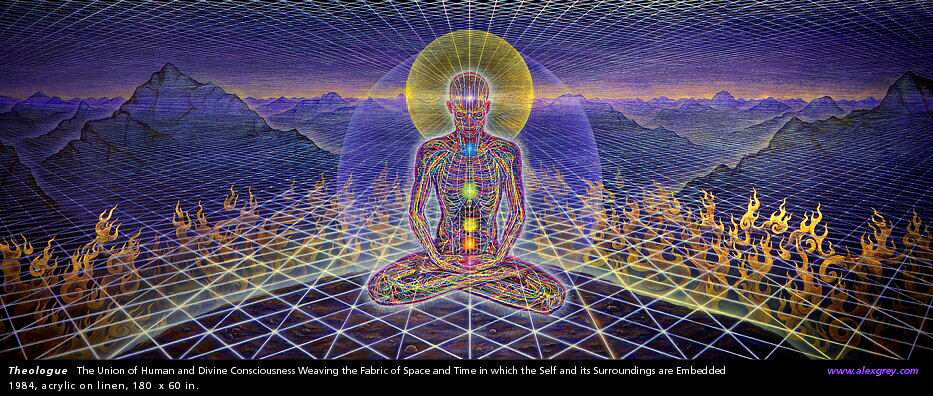
26 Oct The Process of Awakening
 Consciousness is like an iceberg – 90% of it is underwater, invisible to our awareness. Most of our behavior patterns, and the causes of those behaviors, are automatic. The reasons for their occurrence are below our conscious awareness (in the sub-conscious). Awakening is the process of bringing what is below the conscious level up into conscious awareness.
Consciousness is like an iceberg – 90% of it is underwater, invisible to our awareness. Most of our behavior patterns, and the causes of those behaviors, are automatic. The reasons for their occurrence are below our conscious awareness (in the sub-conscious). Awakening is the process of bringing what is below the conscious level up into conscious awareness.
There are great benefits to awakening. When you awaken from the sleep-like trance of automatic behaviors, you feel more alive, you have more options at every moment, and you can make new choices, enabling you to live the life you’ve always wanted. You discover who you really are. You become free, and can create your life more deliberately. Healing and love pour into your life and your relationships. Life becomes a joy instead of a struggle.
You can see your automaticity most easily when you feel hurt, frustrated, abandoned or wronged. When these feelings occur, most of us react with a sadness, anger, withdrawal, controlling behavior, or a combination of these responses. These reactions are sudden and automatic, as if they had been programmed. The truth is, we have been programmed. Our strategies for dealing with hurt or rejection are old patterns that were formed when we were children. Most of them were determined by the time we were five years old. As we grow up, we tend to continue to utilize these same childhood patterns even though the circumstances have changed. For example, when your spouse or love partner yells at you, your first reaction will typically be the same behavior you engaged in as a child when your mother or father yelled at you. You may back away, shrink and withdraw, or you may lash out with anger, get sullen, or become dismissive of their power over you.
There are five major responses to being disempowered:
- withdrawing
- rebelling
- manipulating
- complying
- being passive-aggressive (a combination of the four above)
These are examples of deeply set behavioral responses that are triggered by the behavior of others. If you weren’t busy reacting with automatic responses, you could choose from a range of other options. When we react badly and blow up or withdraw, we often feel guilty, knowing that we could have made a better choice. We feel helpless because we “went on automatic.” In order to free yourself from these patterns, what is required is to look deeply into the pattern itself, bring it up to conscious awareness, and take a series of steps that will free you to be your best self – the person you know you can be.
 Awakening is a multi-dimensional process. There are seven distinct phases of the process, which often overlap:
Awakening is a multi-dimensional process. There are seven distinct phases of the process, which often overlap:
- Unconsciousness/ignorance/denial of automatic reactions and behavior patterns
- Recognition that something is wrong or missing; discovering what it is.
- Deciding that change is needed, and deciding to change (or being forced to change)
- Observation of the pattern; noticing the behaviors and seeing the results
- Interception / Interruption of the automaticity of the behavior, changing the reaction as it happens; beginning to achieve new results
- Understanding the underlying beliefs and triggers that cause the behavior pattern; changing the beliefs; using the will to stop and/or prevent it
- Creating alternatives to choose from; achieving new life
An example of this progression was demonstrated by one of my coaching clients. David was unhappy in his relationship. His girlfriend Deborah was complaining constantly about his being late for their dates. David was clear that it was Deborah’s problem. Her standards for “being on time” were unrealistic. Her constant complaints and criticism made him angry and caused him to withdraw. He loved her, but he was fed up with her critical nature. This was a good example of Phase 1 of the Awakening Process: Unconsciousness/Ignorance/Denial.
To initiate his process of awakening, I began by asking David whether he had, in fact, made an agreement to arrive for his date at a specific time. He said yes, and then he began to tell me all the reasons why. I stopped him, and asked whether he had, in fact, broken that agreement. Reluctantly, he admitted that he had, but again justified his lateness with a list of circumstances that often occurred, causing him to be later than he intended. Traffic was bad. Errands took longer than expected. Last minute requests at work delayed his leaving. He knew that he held some responsibility for the problem, but he pointed to his girlfriend, and to his circumstances, as cause in the matter.
I then asked David whether he had ever had the experience of another person breaking a promise to him, or setting his expectations and then disappointing him. He remembered many such incidents with his father, who lived apart from the family. His father would promise to pick David up at a specific time, describing what they were going to do together on the weekend. His father was usually late, and sometimes never showed up at all. As he remembered these events, David’s sadness and disappointment filled the room. He looked up and asked, “Is this what I’m doing to my girlfriend? Am I making her feel like this?” David had progressed to Phase 2: Recognition that something was wrong, and needed changing.
To advance to each next stage, what is required is more attention and awareness focused on the Self – both the small self (or ego) which is the inner structure of our beliefs, strategies, and behaviors constructed and set in motion during our earliest years, and the larger Self which extends beyond the ego and includes people around us, our environment, and the world at large. Self-awareness begins with self-observation – looking at our feelings and behaviors, and looking at the source of those feelings and behaviors. This is like holding a flashlight and directing it inward, to the core of ourselves, searching in the darkness for lost treasures.
Most people believe that they are too busy for self-observation, or that it would have no useful purpose. Their attention is focused on the outer world, figuring out how to attract attention, love, or the material goods they believe will make them happy. And they are happy, for a moment or two, when those things are gained. But dissatisfaction always seems to creep back in. Maybe a new car will fix it, or a new boyfriend, or another pair of shoes.
 Self-awareness is hard work. It requires a measure of both vulnerability and courage. Self-observation is a key element in the process of awakening. A prisoner who doesn’t know he is in prison can’t escape. A person who isn’t aware that there is a problem can’t solve the problem.
Self-awareness is hard work. It requires a measure of both vulnerability and courage. Self-observation is a key element in the process of awakening. A prisoner who doesn’t know he is in prison can’t escape. A person who isn’t aware that there is a problem can’t solve the problem.
David recognized that he was hurting Deborah’s feelings. In that instant, he made the decision that he had to change. He loved Deborah, and didn’t want to hurt her. Phase 3: Deciding to Change had been reached in only a few minutes of conversation. I asked David to describe a typical “late” situation in detail. This began Phase 4: Observation of the Pattern. He described situations that are typical in our busy lives: he promised to pick Deborah up at 7:00 pm, but there were emergencies at the office. His suit needed to be picked up from the laundry. Traffic was a mess, crawling along at 5 miles per hour. He finally reached Deborah’s house, but was nearly an hour late. He was flustered. He knew that she was already angry. And of course, she was. Deborah was furious because she felt that he didn’t care enough about her to be on time. She felt disrespected. Needless to say, the dual emotional charge and their reactions put a severe damper on their evening, which was supposed to be a time to be together and enjoy each other’s company. David could see that his behavior pattern was causing real damage to their relationship.
We began to explore the underlying causes of the pattern. We checked into his intentions and his motivations. Did he really want to be on time? Was he trying to “get back” at her, for some reason, or was he trying to re-assert control? What was more important, his relationship or his work? Did he really want the relationship to deepen, or to end? This inquiry was valuable for David. Some of his answers came readily, because he was certain about those things. But he had not consciously considered some of the larger questions. Often, people are afraid to ask the larger questions of life (Who am I? What am I doing here? What is important to me?) because they can rock our world, or de-stabilize our comfortable circumstances, but these are key areas of exploration on the path to awakening.
Since every problem has both inner causes and outer circumstances, we explored some workable options – pragmatic changes that David could test to see whether it was possible to shift his pattern of being late. The changes we came up with included: 1) leaving work a little earlier, 2) getting errands done during his lunch hour, and 3) setting more realistic expectations by adjusting the time for the date, to a time he could be counted on to make.
Old patterns continue to re-assert themselves, especially in the face of a good intention to change them. Consequently, it is important to strengthen the muscles of the will, just as we exercise our muscles in the gym, one step at a time. David’s good intentions were also his greatest weakness. He had difficulty saying “No” to the hundred things that could distract him from his goal – which in this case was to be on time. This is the difficult and sometimes painful work of Phase 7: Interception / Interruption. It requires regular practice, and some failures, and continual re-commitment to the goal.
I gave David a coaching assignment for the week to come: “Continue to observe your own behavior, interrupting the pattern whenever possible. Stay focused on your goal of being on time, and don’t let distractions interfere with your intention. Intercept the old pattern when you see it emerging, and interrupt it by saying “No.” See what if feels like to achieve a different result.”
The following week, David reported that he had been successful at arriving on time three out of four evenings. Deborah was thrilled with this change, and she told him that she could now give him room to be late “every once in awhile.” By becoming aware of his behavior pattern, he had given himself new options. When a last minute workplace requests came across his desk, he was able to sit back for a moment, take a breath, and remember his intention. From that place, he was able to say “No” when he normally would have said “Yes.” He realized that a lot of his resentment at work was rooted in his old pattern of saying “Yes” without considering his own needs. David told me that he decided to stop checking his email “one last time” before he left the office, which enabled him to get out of the office on time. He decided to pick up his laundry during lunchtime instead of waiting until after work. He adjusted his drive time expectations by predicting heavy traffic, rather than being surprised by it. David had moved himself, with practice, through Phase 5. Through the exercise of his will and expanding his awareness, he had changed that automatic patterns, given himself new options, and restored his loving relationship with Deborah. When a woman trusts her man, she can open more deeply to him.
There were two more phases of the Awakening Process to go. In our next coaching session, I asked David “What beliefs might be underneath these behaviors?” He quickly identified the belief he had learned from his father: “It’s not important whether you keep your agreements about showing up.” I asked a deeper question: “What is the belief at the center of that, beneath that one?” He saw it clearly: “I’m not important.” I then asked, “What did you decide about the world from that painful place?” He responded, “If I’m not important, than nobody else is, either.” In a sudden epiphany, David saw that this childhood belief, and the hurt at its core, were the root of many of the problems he was experiencing in his life. This is Phase 6: Understanding – the core of awakening process. He recognized that this old belief, still operating below the surface, was destructive. Although it was useful when he was a child, serving to protect him from pain, it no longer served his life.
I asked David, “Would you like to keep that belief, or trade it in on a new belief?” He chose to trade it in. “What belief would serve you now? What belief would be helpful to hold in its place?” David created the belief, “I honor myself and others by keeping my agreements and showing up on time.” When he took this in, he felt wonderful – empowered and happy. This is true transformation. This was Phase 7: Creating Alternatives and achieving new life.
David had become aware of the problem and the pattern of automatic behavior that was causing it. He awoke to the damage he had caused, and made the decision to change. Through self-observation, he opened up new options, and learned that he could shift his behavior. By getting to the root beliefs beneath the surface, he was able to change the entire pattern in his life. Through practice and continued self-observation, he will continue to strengthen his will. He will make mistakes from time to time, and may backslide once in awhile, but the Process of Awakening is a one-way journey toward becoming more aware. Once the iceberg has come out of the water, it’s hard to forget that it’s there.
If you know of a pattern of behavior that is causing damage in your life, you can take yourself or others through these seven phases. To achieve any goal, you must dedicate sufficient attention to it. To change any automatic behavior pattern, you must dedicate sufficient self-observation, bringing it to the conscious level. This is the process of awakening – one step at a time.
© 2010 by Lion Goodman
Click a button above to share this post with your friends and family
No Comments